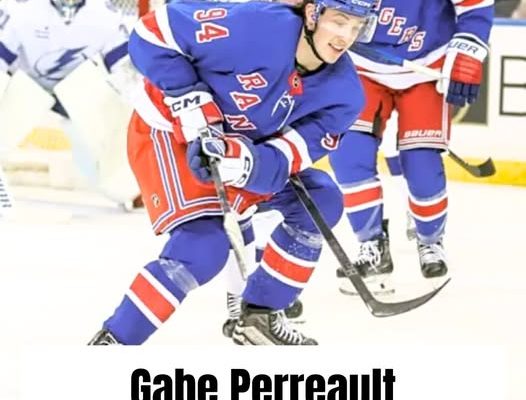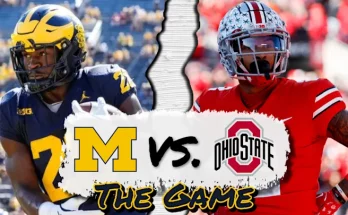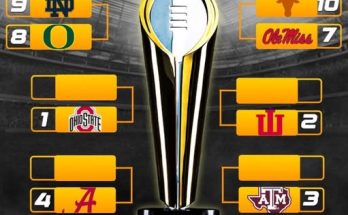The New York Rangers are in a pivotal moment in their organizational trajectory. With a core that has flirted with Stanley Cup contention and a coaching staff unafraid of innovation, the next evolution of the franchise may depend less on trades or free agency, and more on the depth and promise of a prospect pool quietly being curated behind the scenes. With the 2025-26 season on the horizon, questions abound about whether the Rangers’ future is still “next” — or already “now.” In a detailed breakdown of their developmental ranks, ten rising stars emerge as the most likely to shape the next era of hockey at Madison Square Garden. Built for the future? Absolutely. But readiness is no longer hypothetical. These prospects are knocking on the NHL’s door, some with fists, others with a finesse that can only be described as inevitable.
First on the radar is forward Gabe Perreault, a dynamic and cerebral winger selected in the 2023 NHL Draft. His stock has only risen since then, and after tearing through collegiate competition with Boston College, Perreault has proven he’s no longer just a high-IQ player with upside — he’s a legitimate top-six threat. His vision and playmaking instincts are elite, giving the Rangers something they haven’t had consistently in years: a true offensive catalyst capable of unlocking power play units and generating zone entries with both speed and deception. While his defensive game still needs polishing, Perreault’s potential to immediately contribute on a scoring line as early as this coming season can’t be understated.
Not far behind is Brennan Othmann, a player whose trajectory has taken a leap with every level he’s touched. A first-round pick in 2021, Othmann brings grit, a heavy shot, and a relentless forecheck — traits the Rangers’ current top six lack in quantity. What sets Othmann apart is his ability to create chaos in the offensive zone while remaining responsible in his own end. During his AHL stint with Hartford, he showcased improved discipline and shot selection, signaling a player ready for full-time NHL deployment. With his well-rounded skill set, he could slide into a third-line role immediately, providing scoring depth and nastiness that could become infectious across the roster.
Also demanding attention is Adam Sýkora, a tenacious Slovak forward whose combination of speed and pest-like tendencies make him a nightmare for opponents. While not the flashiest player, Sýkora’s game is built for playoff hockey: relentless pressure, penalty killing, and timely scoring. The 2025-26 season could be his breakout campaign, especially if the Rangers look to infuse energy into their bottom six. Coaches love players who can be trusted late in games, and Sýkora’s maturity beyond his years gives him an inside track to earn a meaningful role sooner rather than later.
On defense, the most buzz surrounds Zac Jones. After bouncing between the Rangers and their AHL affiliate, Jones appears primed to solidify a roster spot. A puck-moving defenseman with deceptive skating and elite transition ability, Jones is tailor-made for the modern NHL. The challenge has always been consistency and physicality, but with added strength and increased awareness in the defensive zone, the 24-year-old is ready to take the leap. In a league that demands blue liners who can break the puck out cleanly under pressure, Jones checks all the boxes. The Rangers will be watching his preseason very closely.
Another blueliner generating excitement is Drew Fortescue. The 6-foot-2 American defenseman is not only a mobile skater but also brings a level of composure uncommon in young defenders. His NCAA development at Boston College was marked by rapid improvement in puck control and offensive reads. Although not a lock for the opening night roster, Fortescue could benefit from a few call-ups to ease his transition into the pro game. His upside as a second-pairing defenseman is significant, particularly in a system that allows defensemen to activate offensively.
In net, the Rangers have one of the most quietly compelling goaltending prospects in the league: Dylan Silverstein. Drafted in 2022 and once considered a risky selection due to injuries, Silverstein has emerged as a potential heir to Igor Shesterkin. While Shesterkin remains the undisputed starter, the Rangers’ long-term outlook in goal has been stabilized thanks to Silverstein’s athleticism, rebound control, and poise under pressure. In the AHL, he’s proven capable of stealing games, and should Shesterkin need rest or face injury concerns, Silverstein’s name will be at the top of the call-up list. Having a reliable backup option developed in-house is a luxury very few teams enjoy.
Offensively, one of the more surprising risers has been Bryce McConnell-Barker. Originally drafted for his two-way potential, McConnell-Barker has evolved into a legitimate scoring threat. His OHL performances suggest he may outpace projections as a middle-six center. What’s most exciting about McConnell-Barker is his ability to adapt to the speed of the pro game while maintaining his defensive responsibility. He has shown glimpses of becoming a low-maintenance, high-impact player — the kind that coaches trust in all situations. With continued development, he may be the perfect fit to center the Rangers’ third line in the near future.
Another breakout candidate is Maxim Barbashev, brother of Stanley Cup champion Ivan Barbashev. Maxim plays a similar brand of hockey — gritty, defensively sound, and opportunistic. He doesn’t dazzle with skill, but he makes smart plays and can be a nightmare along the boards. His ability to read the game and position himself for scoring chances has improved notably in the past year. Barbashev may not be the flashiest name in the pool, but he brings the kind of rugged reliability that can make a difference over the grind of an 82-game season.
At the junior level, 2024 first-round pick Cole Hutson is already being touted as the next great offensive defenseman in the system. The younger brother of Lane Hutson, Cole has the skating, vision, and hands to become a future power play quarterback. Although undersized, his awareness and anticipation mitigate physical limitations. While it’s unlikely he makes the team in 2025-26, his development trajectory suggests he could be a cornerstone piece within the next three years. For now, his presence reinforces the notion that the Rangers are not only building for the immediate future but are planning for sustained long-term success.
Rounding out the list is Ryder Korczak, a creative center whose vision and offensive zone awareness make him a potential dark horse to crack the NHL roster. He’s battled through injuries and inconsistency, but when healthy, Korczak flashes top-six potential with his puck distribution and deceptive shot. The challenge will be putting together a full, healthy season in the AHL and forcing the Rangers’ hand. If he does, he could bring some much-needed creativity and pace to a Rangers center group that, while solid, lacks explosive offensive punch behind Mika Zibanejad.
The depth and quality of the Rangers’ prospect pool heading into 2025-26 is not only encouraging — it’s quietly elite. What makes it particularly intriguing is the range of players they’ve cultivated: from highly skilled offensive threats like Perreault and Korczak, to dependable two-way players like Barbashev and McConnell-Barker, to dynamic defenders like Jones, Fortescue, and Hutson. Add in a legitimate goaltending successor in Silverstein and it’s clear this is more than a transitional generation — it’s a foundational one.
This emerging wave of talent gives the Rangers enviable flexibility. If win-now trades are needed midseason, they’ll have assets to move without gutting their future. If injuries strike, they won’t need to look far for replacements. And if the team wants to gradually integrate youth into a veteran-heavy core, the pieces are ready. Some prospects will need another year or two; others are already NHL-ready. That’s the luxury of a well-stocked pipeline: you’re not forced to rush, but you’re never caught unprepared.
While the spotlight will naturally remain on stars like Artemi Panarin, Adam Fox, and Igor Shesterkin, the next faces of the franchise may already be skating in Hartford, the NCAA, or junior leagues. The transition to a new era in New York won’t be sudden or jarring — it’s being engineered with patience, vision, and a belief in development. The Rangers’ front office deserves credit for resisting the temptation to over-leverage the future, instead choosing to build one.
As the 2025-26 season approaches, Rangers fans should watch the preseason rosters, AHL box scores, and college highlights with interest. Because the next great chapter in Blueshirts history may not begin with a trade or free agent signing — it might begin with a kid, stepping onto the Madison Square Garden ice, with a name few knew last year but everyone will remember soon. Built for the future? Absolutely. But ready now? More than you think.



